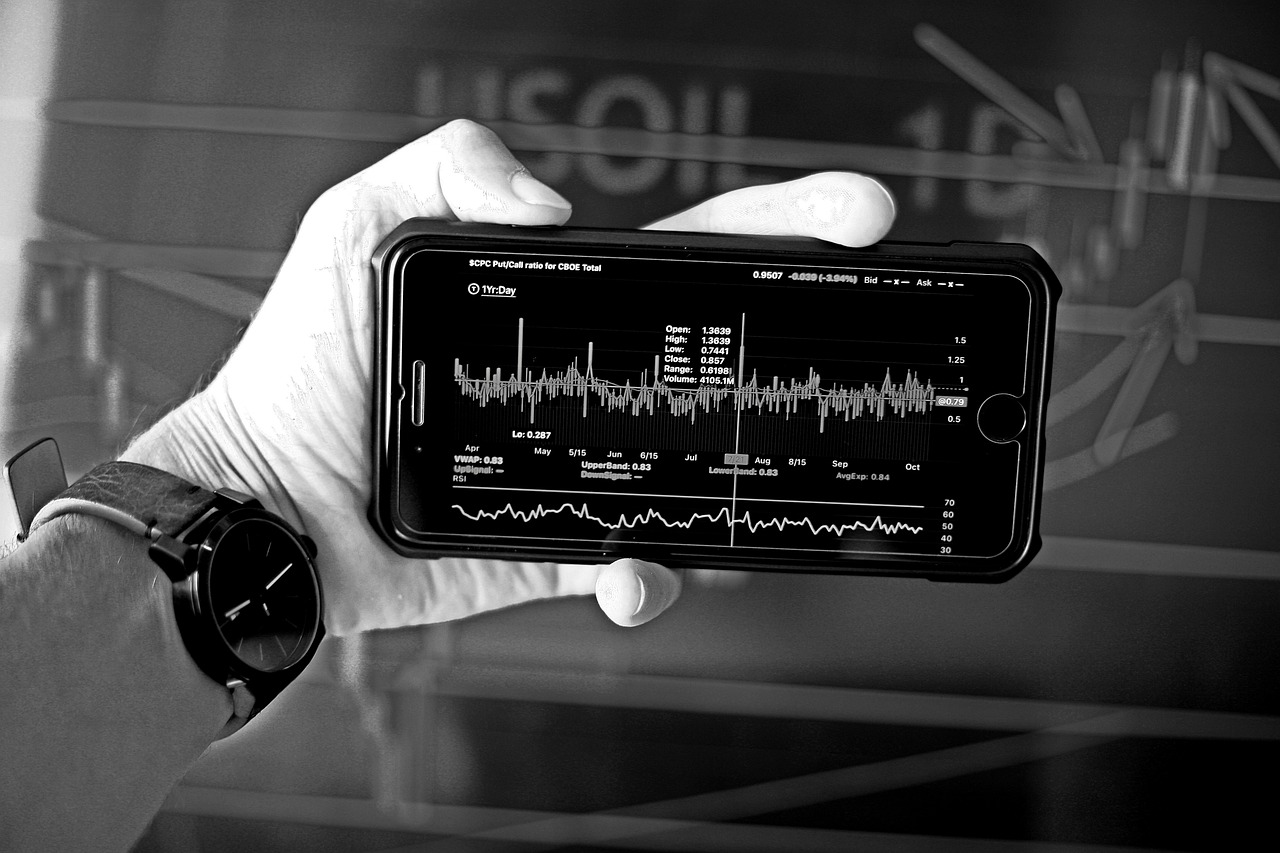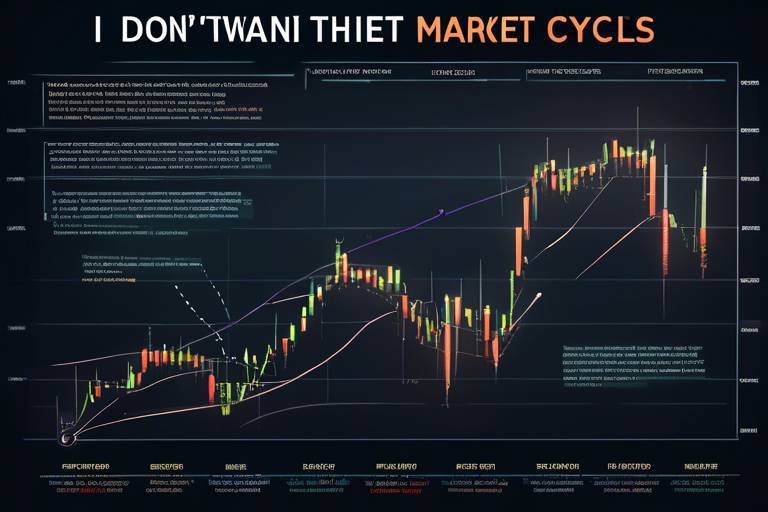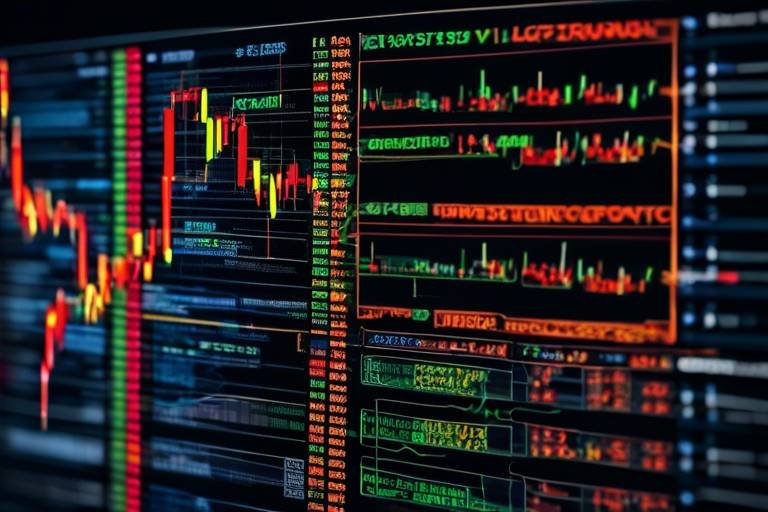Understanding the Volatility Index in Crypto
The world of cryptocurrency is a wild ride, isn't it? One moment, your favorite coin is soaring to new heights, and the next, it's plummeting like a rock. This unpredictability can be both thrilling and terrifying for investors. Enter the Volatility Index (VIX), a tool designed to help you make sense of this chaos. But what exactly is the VIX, and why should you care? In this article, we’ll explore the ins and outs of the Volatility Index, its significance in trading, and how it can be your compass in the tumultuous seas of the crypto market.
The Volatility Index is essentially a measure of market expectations regarding future price fluctuations in cryptocurrencies. Think of it as a weather forecast for the financial world. Just as a meteorologist predicts storms and sunny days, the VIX helps traders gauge when the market might be about to take a turn. By understanding how the VIX is calculated and what it signifies, you can make more informed decisions during those unpredictable moments. It’s like having a map in a dense forest—you might still face challenges, but at least you know where you’re headed.
So, why is the VIX so important in trading? Well, in the highly volatile realm of cryptocurrencies, it serves several critical purposes. Firstly, it helps traders assess risk. If the VIX is high, it suggests that the market is brimming with uncertainty, which could mean it’s time to tread cautiously. On the flip side, a low VIX indicates a more stable market, potentially opening the door for opportunities. Here’s a quick breakdown of how the VIX can influence your trading strategies:
| VIX Level | Market Sentiment | Trading Implications |
|---|---|---|
| High | Fear | Consider hedging or reducing exposure |
| Low | Complacency | Look for buying opportunities |
Understanding the relationship between the VIX and market sentiment is crucial. When the VIX spikes, it often reflects a surge in trader anxiety, indicating that many are worried about potential downturns. Conversely, when the VIX is low, it suggests that traders are feeling more secure, which can lead to increased buying activity. This tug-of-war between fear and complacency is what makes the VIX a powerful tool for predicting market behavior.
But wait, there’s more! The VIX doesn't just help you understand when to buy or sell; it can also provide insights into broader market trends. For instance, a rising VIX often precedes market downturns, while a falling VIX may signal potential recoveries. By analyzing these patterns, traders can position themselves strategically, maximizing their chances of success. It’s like watching the tides before setting sail—you want to know when the waves are in your favor.
As we dive deeper into the world of the Volatility Index, it’s essential to recognize that while the VIX is a valuable tool, it’s not without its limitations. It may not always accurately predict market movements, and relying solely on it can lead to poor decision-making. Instead, consider using the VIX in conjunction with other indicators to create a more comprehensive trading strategy. Think of it as using multiple instruments in a symphony—you want them all to harmonize for the best results.
In conclusion, the Volatility Index is a powerful ally for anyone navigating the unpredictable waters of cryptocurrency trading. By understanding its implications, interpreting its signals, and developing strategies around it, you can enhance your trading performance. As the crypto market continues to evolve, the VIX will likely play an even more significant role in helping investors make sense of volatility.
- What is the Volatility Index? The Volatility Index measures the market's expectations of future volatility in cryptocurrency prices.
- How can I use the VIX in trading? Traders can use the VIX to assess risk, identify opportunities, and manage their portfolios effectively.
- Are there limitations to the VIX? Yes, while useful, the VIX may not always predict market movements accurately and should be used alongside other indicators.
- What does a high VIX indicate? A high VIX typically indicates market fear and uncertainty, suggesting that traders should be cautious.
- What does a low VIX suggest? A low VIX suggests market complacency, which may present buying opportunities.

What is the Volatility Index?
The Volatility Index (VIX) is a fascinating tool that measures the market's expectations of future volatility in the prices of cryptocurrencies. Think of it as a barometer for fear and uncertainty in the crypto world. When traders are anxious about price fluctuations, the VIX tends to rise, indicating a higher level of expected volatility. Conversely, when traders feel more secure, the VIX drops, suggesting a calmer market environment. This index is calculated using options prices for a selection of cryptocurrencies, reflecting the market's collective sentiment.
Understanding the VIX is crucial for anyone involved in trading cryptocurrencies. It serves as a guide for investors, helping them gauge the current market climate and make informed decisions. For instance, a high VIX value might prompt a trader to adopt a more cautious approach, perhaps considering hedging strategies to protect their investments. On the other hand, a low VIX could signal a good time to enter the market, as it may indicate stability and potential for growth.
To illustrate how the VIX works, consider the following table that summarizes its implications:
| VIX Level | Market Sentiment | Investor Action |
|---|---|---|
| High (Above 30) | Fear | Consider hedging or selling |
| Moderate (20-30) | Uncertainty | Evaluate risks and opportunities |
| Low (Below 20) | Complacency | Possibly buy or hold |
In summary, the Volatility Index is not just a number; it’s a reflection of the prevailing mood in the cryptocurrency market. By keeping an eye on the VIX, traders can better navigate the turbulent waters of crypto trading, making educated choices that align with their risk tolerance and investment goals. As we delve deeper into the world of crypto trading, understanding this index will become increasingly invaluable for anyone looking to thrive in this unpredictable market.

Importance of the Volatility Index in Trading
The Volatility Index (VIX) is not just a number; it's a powerful tool that can significantly impact trading strategies in the cryptocurrency market. Imagine navigating a turbulent sea without a compass; that’s how trading can feel without understanding the VIX. It provides traders with insights into market conditions, enabling them to make informed decisions amidst the chaos of price fluctuations. By assessing the VIX, traders can gauge the level of risk associated with their investments, which is crucial in a market known for its wild swings.
One of the most critical aspects of the VIX is its ability to highlight potential opportunities. When the VIX is high, it often indicates increased uncertainty and fear among traders. This scenario can lead to significant price corrections, creating buying opportunities for savvy investors. Conversely, a low VIX may suggest a complacent market, where prices are stable but could be at risk of sudden drops if unexpected news arises. Understanding these signals can help traders position themselves strategically, whether that means entering a trade or opting to sit on the sidelines.
Moreover, the VIX serves as a risk management tool. By monitoring volatility levels, traders can adjust their positions accordingly. For instance, during periods of high volatility, a trader might choose to tighten stop-loss orders to protect against potential losses. On the other hand, when the VIX indicates lower volatility, they might feel more confident in holding onto their positions for longer periods, anticipating steady growth. This adaptability is what separates successful traders from those who struggle to keep up with the market.
Ultimately, the importance of the Volatility Index in trading cannot be overstated. It acts as a barometer for market sentiment, helping traders navigate the unpredictable waters of cryptocurrency. By integrating the VIX into their trading strategies, investors can enhance their ability to anticipate market movements, manage risk effectively, and seize opportunities that others might overlook. In a world where every second counts, having the VIX in your toolkit can make all the difference.

How the VIX Affects Market Sentiment
The Volatility Index (VIX) serves as a crucial barometer for gauging market sentiment in the cryptocurrency world. Imagine the VIX as a pulse monitor for the crypto market—when it spikes, it's like a heart racing in response to fear or uncertainty. Conversely, when it drops, it indicates a sense of calm or complacency among traders. This dynamic relationship between the VIX and market sentiment can significantly influence trading strategies and decisions.
High VIX values often signal heightened anxiety among investors, suggesting that the market is bracing for potential downturns. During such times, you might notice a flurry of sell-offs as traders rush to protect their assets. It’s akin to a flock of birds taking flight at the slightest hint of danger. On the other hand, low VIX values generally reflect a more relaxed atmosphere, where traders might feel more confident in their positions, leading to increased buying activity. This can create a feedback loop, where rising prices further diminish fear, leading to even lower VIX values.
Understanding this relationship is not just about observing numbers; it's about interpreting the emotional state of the market. When the VIX rises, it’s essential to ask yourself: What are traders feeling right now? Are they scared, or are they overly confident? This emotional insight can be invaluable for making informed trading decisions. For instance, a trader might decide to hedge their positions when the VIX climbs above a certain threshold, fearing that a market correction is imminent.
Moreover, the VIX can serve as a leading indicator for price movements. A rapidly increasing VIX often precedes market corrections, while a declining VIX might suggest that the market is gearing up for a rally. In this way, savvy traders can use VIX trends to time their entries and exits, navigating the tumultuous waters of cryptocurrency trading more effectively.
In summary, the Volatility Index is more than just a number; it is a reflection of the collective psyche of the market. By paying attention to VIX movements, traders can gain a deeper understanding of market sentiment, allowing them to make more strategic decisions. As the crypto landscape continues to evolve, the importance of the VIX in shaping market sentiment will only become more pronounced.
- What does a high VIX indicate? A high VIX typically indicates increased market volatility and fear among investors, suggesting potential price declines.
- Can the VIX predict market movements? While the VIX can provide insights into market sentiment, it should be used in conjunction with other indicators for more accurate predictions.
- How can traders use the VIX in their strategies? Traders can use the VIX to time their market entries and exits, hedge against risks, and assess overall market conditions.

Interpreting VIX Signals
Interpreting VIX signals is like reading the mood of a crowd at a concert; it gives traders a glimpse into the collective emotions and expectations of the market. When the Volatility Index (VIX) spikes, it's akin to the audience getting anxious—perhaps the band is late, or there's a sudden change in the weather. This spike often indicates that traders are bracing themselves for potential price swings, which can lead to a sense of fear or uncertainty. On the flip side, when the VIX is low, it’s like the crowd is relaxed, enjoying the music without a care in the world, suggesting that traders feel confident and complacent about the current market conditions.
To effectively interpret these signals, traders should not only look at the VIX levels but also consider the broader context of market trends. For instance, a rising VIX might signal that it’s time to tighten your portfolio, much like a cautious concertgoer who checks their belongings in a crowded venue. Conversely, a falling VIX can be a green light for traders looking to jump into positions, as it suggests that the market may be stabilizing.
Here are a few key points to consider when interpreting VIX signals:
- High VIX Levels: Generally indicate market fear and potential downturns. Traders might want to consider protective strategies, like options or stop-loss orders.
- Low VIX Levels: Suggest complacency, where traders might feel too comfortable, which can be a warning sign of an upcoming correction.
- Trend Analysis: Look for patterns in VIX movements. A consistent rise in the VIX can hint at increasing market volatility, while a consistent fall may suggest a return to stability.
Moreover, it’s essential to combine VIX signals with other technical indicators for a more comprehensive analysis. Relying solely on the VIX can be misleading, as it doesn't account for all market dynamics. Think of it as checking the weather forecast before going out; it’s a good start, but you should also consider factors like the wind, humidity, and time of day.
In conclusion, interpreting VIX signals requires not just a glance at the numbers but a deeper understanding of market psychology. By paying attention to these signals and their implications, traders can make more informed decisions, navigating through the often tumultuous waters of the cryptocurrency market with greater confidence.
- What does a high VIX indicate? A high VIX typically indicates increased market volatility and fear among traders, suggesting potential price drops.
- Can the VIX predict market crashes? While the VIX can signal increased volatility, it should be used alongside other indicators to predict market movements accurately.
- How often should I check the VIX? It's wise to monitor the VIX regularly, especially during periods of market uncertainty, to gauge trader sentiment.

VIX and Market Trends
The relationship between the Volatility Index (VIX) and market trends is a fascinating dance that traders need to understand to navigate the unpredictable waters of the cryptocurrency market. Think of the VIX as a barometer for market anxiety; when it rises, it's often a signal that traders are bracing for turbulence. Conversely, a falling VIX can indicate a sense of calm or even overconfidence among investors. This dynamic interplay can provide critical insights into potential market movements.
When analyzing the VIX in relation to market trends, one can observe certain patterns that emerge over time. For instance, a rising VIX typically precedes market downturns. This isn't just a coincidence; it reflects an increase in fear and uncertainty, prompting traders to sell off assets to mitigate potential losses. On the flip side, a declining VIX often suggests that the market is stabilizing, which can be a precursor to a recovery or upward trend. It's like watching the weather change; a dark cloud (high VIX) might signal a storm (market drop), while clear skies (low VIX) can indicate a sunny day ahead (market recovery).
To illustrate this relationship more clearly, consider the following table that highlights key VIX levels and their corresponding market trends:
| VIX Level | Market Sentiment | Potential Market Trend |
|---|---|---|
| Above 30 | High Anxiety | Market Downturn Likely |
| 20-30 | Moderate Anxiety | Potential Corrections |
| Below 20 | Low Anxiety | Market Recovery Possible |
Understanding these trends is essential for traders looking to time their entries and exits effectively. For example, if a trader notices that the VIX has spiked above 30, it may be prudent to consider short positions or protective strategies. On the other hand, if the VIX falls below 20, it could signal a good time to enter the market for potential gains. This kind of analysis doesn't just help traders react to market changes; it empowers them to anticipate and make informed decisions based on the prevailing market sentiment.
However, it’s crucial to remember that while the VIX can provide valuable insights, it should not be the sole indicator for making trading decisions. Combining VIX analysis with other technical indicators, such as moving averages or support and resistance levels, can create a more robust trading strategy. Just like a chef wouldn’t rely on just one ingredient to create a delicious dish, traders should blend various tools to enhance their market analysis.
- What does a high VIX indicate? A high VIX indicates increased market volatility and fear among investors, often leading to potential market downturns.
- Can the VIX predict market movements? While the VIX can provide insights into market sentiment, it should not be solely relied upon for predicting market movements.
- How often should I check the VIX? It’s advisable to monitor the VIX regularly, especially during times of market uncertainty, to inform your trading strategies.

Strategies for Utilizing the Volatility Index
When it comes to navigating the unpredictable waters of the cryptocurrency market, having a solid strategy based on the Volatility Index (VIX) can be a game changer. Think of the VIX as your compass in a stormy sea; it helps you gauge the intensity of the waves and decide whether to set sail or anchor down. Here are some effective strategies to utilize the VIX to your advantage:
First off, one popular approach is hedging against risks. Traders often use the VIX to identify periods of high volatility, which can signal potential downturns. By purchasing options or futures contracts when the VIX is elevated, traders can protect their portfolios from sudden price drops. It’s like wearing a life jacket when you know the waters are rough; it gives you that extra layer of security.
Another strategy involves timing your market entries and exits. If you notice the VIX trending downward after a period of high volatility, it could be a sign that the market is stabilizing, making it an opportune moment to enter a trade. Conversely, if the VIX spikes, it might be wise to consider exiting positions, as this often indicates heightened fear and uncertainty among traders.
Additionally, you can employ a strategy of diversifying your portfolio based on VIX signals. For instance, if the VIX indicates increased volatility, you might want to allocate more funds to stablecoins or less volatile assets. This way, you can cushion your investments against the inevitable price swings that come with a turbulent market.
Lastly, it's essential to combine VIX analysis with other indicators for a more comprehensive view. For example, using the VIX in conjunction with moving averages or relative strength index (RSI) can provide a more nuanced understanding of market conditions. This multi-faceted approach helps you avoid the pitfalls of relying solely on one metric, much like how a seasoned sailor uses multiple tools to navigate the ocean.
In summary, leveraging the Volatility Index effectively requires a blend of risk management, market timing, diversification, and comprehensive analysis. By incorporating these strategies into your trading routine, you can better navigate the choppy waters of the crypto market and potentially enhance your trading performance.
- What is the Volatility Index?
The Volatility Index (VIX) measures market expectations of future volatility, helping traders assess risk in the cryptocurrency market.
- How can I use the VIX in my trading strategy?
You can use the VIX to hedge against risks, time your market entries and exits, diversify your portfolio, and combine it with other indicators for better insights.
- Is the VIX always accurate?
No, while the VIX is a valuable tool, it has limitations and should be used alongside other indicators for informed decision-making.
- What does a high VIX indicate?
A high VIX typically indicates increased market fear and uncertainty, often signaling potential downturns.

Limitations of the Volatility Index
While the Volatility Index (VIX) is a valuable tool for traders navigating the unpredictable waters of the cryptocurrency market, it’s essential to recognize its limitations. One of the primary concerns is that the VIX does not always provide a clear picture of future market movements. It is more of a reflection of current market sentiment rather than a definitive predictor of price changes. Think of it as a weather forecast: it can tell you there’s a storm brewing, but it can’t guarantee whether it will rain or shine tomorrow.
Moreover, the VIX is often influenced by external factors that may not be directly related to the cryptocurrency market. For example, macroeconomic indicators, geopolitical events, and regulatory news can all sway the VIX, leading to potential misinterpretations. This complexity means that traders need to exercise caution and not rely solely on the VIX when making trading decisions.
Another limitation is that the VIX can be highly volatile itself. This inherent volatility can lead to sudden spikes or drops that might mislead traders into thinking there’s an impending market crash or rally. For instance, a sudden increase in the VIX might trigger panic selling, even if the underlying market fundamentals remain strong. Therefore, it’s crucial for traders to maintain a balanced perspective and consider the VIX in conjunction with other market indicators.
To better illustrate the limitations of the VIX, let’s take a look at some common misconceptions:
- Misconception 1: The VIX is a foolproof indicator of market trends.
- Misconception 2: A high VIX always means a market crash is imminent.
- Misconception 3: The VIX can predict the exact timing of market movements.
These misconceptions can lead to poor trading decisions, emphasizing the need for a comprehensive approach to market analysis. Traders should consider using the VIX alongside other indicators such as moving averages, relative strength index (RSI), and market volume to create a more robust trading strategy.
In summary, while the Volatility Index serves as a helpful gauge of market sentiment, it should not be viewed in isolation. Understanding its limitations is crucial for traders looking to enhance their decision-making process in the ever-evolving cryptocurrency landscape.
Q1: Can the VIX be used for long-term investing?
A1: The VIX is primarily designed for short-term trading strategies. Long-term investors should focus on fundamental analysis rather than solely relying on the VIX.
Q2: How often should I check the VIX?
A2: Traders typically monitor the VIX closely during periods of high volatility or market uncertainty. However, it’s wise to check it regularly as part of your overall market analysis.
Q3: Are there alternatives to the VIX for measuring market volatility?
A3: Yes, other indicators such as the Average True Range (ATR) and Bollinger Bands can also provide insights into market volatility and help inform trading decisions.

Common Misconceptions about the VIX
When it comes to the Volatility Index (VIX), there are several misconceptions that often cloud traders' understanding and usage of this important tool. One of the most prevalent myths is that the VIX can predict market movements with absolute certainty. While the VIX does provide insights into market sentiment and potential volatility, it is not a crystal ball. Instead, think of it as a weather forecast; it can indicate a storm might be brewing, but it can't tell you exactly when the rain will start or how intense it will be.
Another common misunderstanding is that a high VIX always means a market crash is imminent. In reality, a higher VIX indicates increased uncertainty and potential for price swings, but it doesn't guarantee that a downturn is on the horizon. In fact, many traders use high VIX readings as opportunities to buy, believing that prices may rebound after a period of volatility. This brings us to the misconception that the VIX is only useful for bearish strategies. On the contrary, savvy traders can leverage the VIX for both bullish and bears strategies, adapting their approaches based on market conditions.
Moreover, some traders believe that the VIX is only relevant for short-term trading. While it's true that the VIX is often used for day trading and short-term strategies, it can also provide valuable insights for long-term investors. By monitoring VIX trends over time, investors can gain a broader understanding of market cycles and adjust their portfolios accordingly. In essence, the VIX is a versatile tool that can be applied across various trading horizons.
To clarify these misconceptions, let’s summarize some key points:
- The VIX does not predict market movements with certainty.
- A high VIX does not always mean a market crash is coming.
- Traders can utilize the VIX for both bullish and bearish strategies.
- The VIX is relevant for both short-term and long-term investors.
By addressing these misconceptions, traders can better understand how to leverage the VIX in their strategies. Remember, the Volatility Index is a tool—much like a compass that guides you through the rocky terrains of the cryptocurrency market. It won’t carry you to your destination, but it can certainly help you navigate the twists and turns along the way.
Q1: What is the primary purpose of the VIX?
A1: The primary purpose of the VIX is to measure market expectations of future volatility, helping traders assess risk and make informed decisions.
Q2: Can the VIX predict price movements?
A2: While the VIX indicates potential volatility, it cannot predict specific price movements with certainty.
Q3: How can I use the VIX in my trading strategy?
A3: Traders can use the VIX to gauge market sentiment, identify potential entry and exit points, and develop strategies for both bullish and bearish markets.
Q4: Is the VIX only applicable to short-term trading?
A4: No, the VIX can be useful for both short-term and long-term trading strategies, providing insights into market cycles and trends.

Future of the Volatility Index in Crypto
The future of the Volatility Index (VIX) in the cryptocurrency market looks quite promising as we continue to witness the evolution of digital assets. With the increasing sophistication of trading tools and methodologies, the VIX is expected to become an even more integral part of the trader's toolkit. As the crypto market matures, we can anticipate several key developments that could enhance the relevance and effectiveness of the VIX for investors.
One major trend is the advancement in data analytics and machine learning technologies. These innovations can help refine the algorithms used to calculate the VIX, leading to more accurate predictions of market volatility. By harnessing vast amounts of data from various sources—such as social media sentiment, trading volume, and historical price movements—traders can gain deeper insights into market dynamics. This could potentially transform the VIX into a more reliable indicator of future price movements.
Moreover, as institutional investors continue to enter the cryptocurrency space, there will be a growing demand for sophisticated risk management tools. The VIX can serve as a vital instrument for these investors, helping them navigate the turbulent waters of crypto trading. With institutional adoption, we might see the introduction of new financial products linked to the VIX, such as futures and options, which would provide traders with additional avenues for hedging and speculation.
Another exciting possibility is the potential for the VIX to integrate with decentralized finance (DeFi) platforms. As DeFi continues to gain traction, the ability to measure and manage volatility on these platforms could revolutionize trading strategies. Imagine a scenario where the VIX is incorporated into smart contracts, allowing for automated trading based on volatility thresholds. This could not only enhance trading efficiency but also democratize access to sophisticated risk management tools for retail investors.
In addition, the cryptocurrency market is known for its rapid evolution. The introduction of new assets and trading pairs will likely lead to a more diverse range of volatility measures. This could pave the way for the development of multiple VIX-like indices tailored to specific sectors within the crypto market, such as DeFi, NFTs, or stablecoins. By offering a more granular view of volatility, these indices could help traders make more informed decisions.
However, it’s essential to remain cautious. While the future of the VIX in crypto is bright, it’s crucial to understand that no indicator is infallible. The unpredictable nature of the cryptocurrency market means that traders should always use the VIX in conjunction with other tools and indicators. This holistic approach will help mitigate risks and enhance overall trading performance.
In conclusion, the future of the Volatility Index in the cryptocurrency market holds tremendous potential. With advancements in technology, the integration of institutional practices, and the evolution of the market itself, the VIX may very well become a cornerstone for traders aiming to navigate the complexities of crypto investments. As we look ahead, staying informed and adaptable will be key to leveraging the full benefits of the Volatility Index in this ever-changing landscape.
- What is the Volatility Index? The Volatility Index measures market expectations of future volatility in cryptocurrency prices, helping traders assess risk and market sentiment.
- How can the VIX help in trading? The VIX aids in identifying potential trading opportunities and managing portfolios effectively in a volatile market.
- Are there limitations to the Volatility Index? Yes, the VIX may not always accurately predict market movements, so it should be used alongside other indicators.
- What is the future of the VIX in crypto? The future looks promising, with advancements in technology and methodologies expected to enhance its predictive capabilities.
Frequently Asked Questions
- What is the Volatility Index (VIX) in cryptocurrency?
The Volatility Index (VIX) is a tool that measures the market's expectations of future volatility in cryptocurrency prices. It provides insights into how much the market anticipates prices will fluctuate, helping traders make informed decisions in uncertain conditions.
- Why is the Volatility Index important for traders?
The VIX is crucial because it helps traders assess risk and identify potential opportunities in the highly volatile crypto market. By understanding the VIX, investors can better manage their portfolios and make strategic trading decisions based on market sentiment.
- How does the VIX influence market sentiment?
The VIX reflects trader anxiety and expectations. A high VIX value usually indicates fear among investors, while a low value suggests complacency. This sentiment can significantly affect trading behavior, leading to buy or sell decisions based on perceived market risk.
- How can traders interpret VIX signals?
Traders interpret VIX signals by analyzing trends in volatility. For instance, a rising VIX might suggest it's time to sell, while a falling VIX could indicate a buying opportunity. Understanding these signals can help traders time their market entries and exits more effectively.
- What strategies can be developed using the Volatility Index?
Traders can utilize the VIX to develop various strategies, such as hedging against risks or enhancing returns. By understanding how to leverage the VIX, traders can improve their overall trading performance and make more strategic decisions in a volatile market.
- Are there limitations to using the Volatility Index?
Yes, while the VIX is a valuable tool, it has limitations. It may not always accurately predict market movements, and traders should use it in conjunction with other indicators for better decision-making. Relying solely on the VIX can lead to misguided trades.
- What are some common misconceptions about the VIX?
Many people believe that the VIX is a foolproof indicator of market direction, which is misleading. Others think it only reflects short-term volatility. Clarifying these misconceptions can help traders use the VIX more effectively in their trading strategies.
- What does the future hold for the Volatility Index in crypto?
The future of the VIX in the cryptocurrency market looks promising. As the market matures, advancements in VIX methodologies may enhance its predictive capabilities, making it an even more relevant tool for investors looking to navigate the complexities of crypto trading.



















